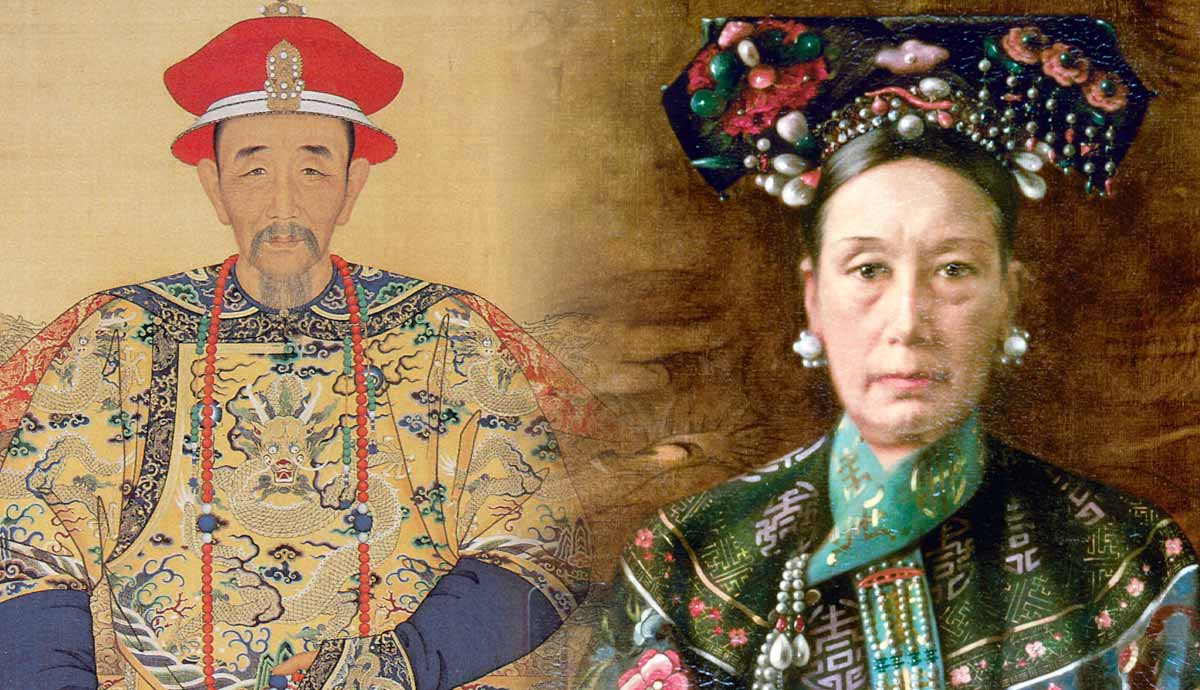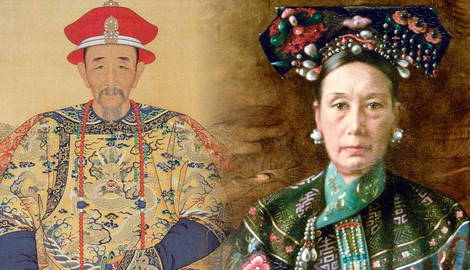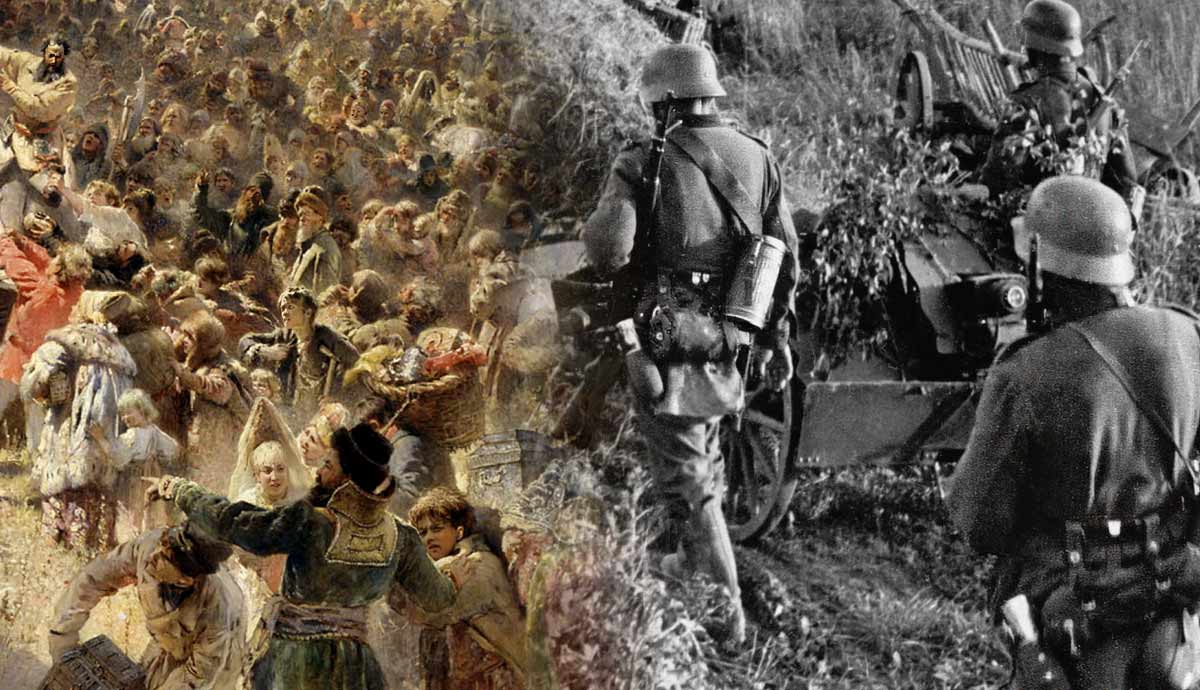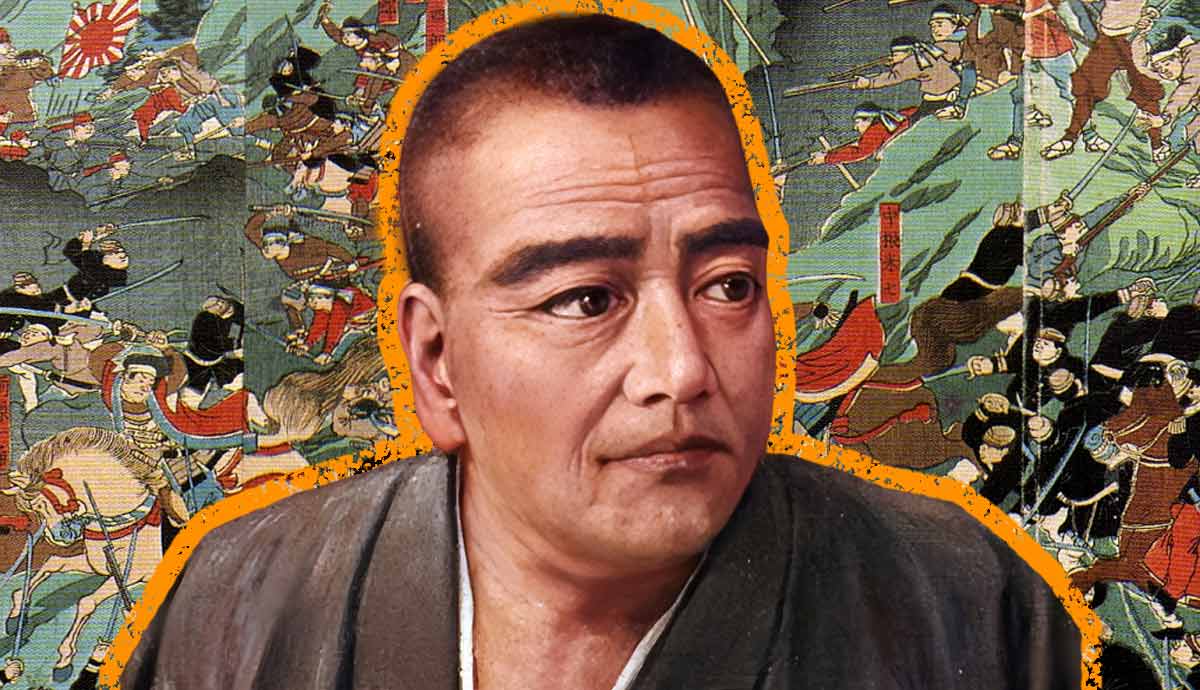
The Ming Dynasty was founded in 1368 and brought an end to Mongol rule in China. The dynasty reached its height in the early 15th century when the Yongle Emperor ordered the construction of the Forbidden City in Beijing and ordered Zheng He’s voyages of exploration. While the Ming defended itself against threats from pirates and Mongols, it was eventually overthrown by the Manchus. The Qing Dynasty presided over an age of imperial splendor in the 18th century but was weakened by rebellion and European colonialism and fell in 1912.
From Peasant to Emperor

Over the course of Chinese history, two men who started life as peasants rose to become the founding emperors of prosperous dynasties. The first was Liu Bang, who defeated his rival Xiang Yu to found the Han Dynasty in 202 BCE. The second was Zhu Yuanzhang, who established the Ming Dynasty in the 14th century and overthrew the Mongol Yuan Dynasty.
Born in present-day Anhui province in 1328, Zhu was a young Buddhist monk in 1352 when he joined the Red Turban Rebellion after his monastery was pillaged by Yuan troops. He soon acquired a loyal band of followers and operated as an independent warlord from 1355. After capturing and establishing his capital at Nanjing in 1356, Zhu organized a disciplined army and gained ground over his rivals as the Red Turban movement fragmented.
In 1363, Zhu defeated his major rival Chen Yuliang at the Battle of Lake Poyang in Jiangxi province, enabling the conquest of the central and lower Yangtze regions by 1367. In January 1368, Zhu proclaimed the Ming Dynasty and the beginning of the Hongwu Era. An invasion of northern China was already underway, and in September 1368, the Ming general Xu Da captured the Yuan capital of Dadu, which was renamed Beiping, or “Northern Peace.” This marked the official end of the Yuan Dynasty, although a Northern Yuan state ruled the northern steppe until the 17th century.
Guided by Confucian principles, the Hongwu Emperor pursued an economic policy that favored the peasantry and targeted the merchant class. In 1371, he introduced the haijin, an embargo on maritime trade that only allowed for official tribute missions. During the latter years of his reign, the emperor became increasingly paranoid and put to death many officials and generals who had helped him found the dynasty. He divided his empire into principalities ruled by his sons but banned them from returning to Nanjing.
Everlasting Happiness

The Hongwu Emperor’s eldest son predeceased him, so upon his death in 1398, he was succeeded by his grandson, the Jianwen Emperor. The new emperor attempted to curb the power of his uncles and soon faced a rebellion from Zhu Di, Hongwu’s fourth son, who, as Prince of Yan, had his power base at Beiping. In 1402, Zhu Di conquered Nanjing and proclaimed himself emperor with the era name Yongle, which translates to “Everlasting Happiness.”
The new emperor desired to move his capital to Beiping, and in 1407, he ordered the construction of a palace complex now known as the Forbidden City. After building work was completed in 1420, Yongle formally transferred his court to Beijing, which he renamed Beijing, literally “Northern Capital.” He also built his mausoleum at a site north of Beijing, which, over time, became the Ming Tombs. Yongle improved transport links to his capital by rebuilding the Grand Canal and connecting it to Beijing.
One of the greatest achievements of Yongle’s reign was the creation of the Yongle Encyclopedia, an immense undertaking that ran to over 11,000 volumes and involved over 2,000 scholars. The encyclopedia was entirely handwritten and kept in the palace. The original was subsequently lost, though a small portion of a 16th-century copy still survives.
Between 1410 and 1424, the Yongle Emperor personally led five campaigns against the Mongols. While the Ming armies were unable to extinguish the Northern Yuan state, they managed to conquer new territories. The emperor died in August 1424 while returning from the fifth expedition.
Trade and Exploration

The Yongle Emperor rescinded his father’s embargo on maritime trade and actively sought to project China’s power overseas by expanding commercial and tributary relationships. To achieve these ambitions, he organized fleets of up to 300 ships under the command of his friend, the Muslim eunuch Zheng He, whom he appointed grand admiral.
Between 1405 and 1433, Zheng He led seven expeditions around the Indian Ocean, reaching the coast of East Africa for the final three. At every opportunity, the grand admiral sought out diplomatic and tributary relationships with local rulers, most of whom were willing to submit to Chinese terms. Those who were less cooperative were often cowed into submission by the Chinese armada.
Although Zheng He’s final voyage took place after Yongle’s death, the admiral’s demise during the return passage to China in 1433 spelled the end of Ming China’s treasure fleets as Confucian traditionalists gained the upper hand at court and reinstated the maritime embargo. Around the same time, Portuguese mariners began exploring the western coast of Africa. In 1513, fifteen years after Vasco da Gama reached India, the Portuguese explorer Jorge Alvares arrived in China.

After helping the Chinese authorities suppress local pirates, the Portuguese established a permanent presence in Macau in 1557. Portuguese commercial prospects improved in 1567 when the Hanjin was repealed. Chinese ceramics were highly prized by Europeans, and porcelain production increased significantly during the reign of the Wanli Emperor (1572-1620). The imperial kilns at Jingdezhen in Jiangxi province produced iconic blue-and-white porcelain for export.
Although Europeans brought new crops from America to China, such as maize, sweet potatoes, and tobacco, on the whole, the Chinese saw little value in European goods. As a result, Europeans bought porcelain and silk from China with large amounts of silver, much of it from the Spanish Americas via the Philippines. While the increase in money supply stimulated economic development and contributed to general prosperity, it also had an inflationary impact.
Frontier Threats

The Ming Dynasty’s isolationist policies between the 1430s and the 1560s owed much to the continued threat of the Mongols across the northern frontier. In July 1449, the Ming court suffered a major calamity in the so-called Tumu Crisis, when a large Ming army was defeated by the Oirat Mongols at the Tumu Fortress near the Great Wall with heavy casualties. Most humiliatingly of all, Emperor Yingzong was captured by the Mongols, prompting a younger brother to assume the throne as the Jingtai Emperor. Since the new emperor was not particularly concerned about his brother’s fate, the Mongols recognized they had little diplomatic leverage and released Yingzong in 1450. The former emperor was imprisoned by his brother until retaking power in a coup in 1457.
The Ming Dynasty’s restrictive trade policies encouraged pirate activity to satisfy the demand for Chinese goods. The term wokou was initially used to refer to Japanese pirates raiding China’s eastern coast, though, by the 16th century, a large number of pirates were Chinese. Wokou activity peaked during the reign of the Jiajing Emperor (1521-67). Ming forces struggled to cope with the devastation to coastal provinces until General Qi Jiguang developed new tactics and weapons to defeat the pirates, and the repeal of the haijin in 1567 encouraged many pirates to trade legally. General Qi was then transferred to the northern frontier, where he supervised the strengthening of the Great Wall.
The Rise of the Manchu

At the beginning of the 17th century, the Ming Dynasty faced a new threat on its northeastern frontier from Nurhaci, the Jurchen chieftain who reunited his people and organized them into his Eight Banner Army. While Nurhaci initially appeared to be a loyal Ming vassal, he proclaimed himself khan of the Later Jin in 1616, reviving the dynastic name of his ancestors who ruled northern China in the 12th century. He conquered the city of Shenyang in 1621 and moved his capital there in 1625.
Nurhaci died in 1626 after being wounded in battle and was succeeded by his son, Hong Taiji. He consolidated his father’s conquests and expanded his realm at the expense of the Mongols in the west and the Ming Chinese to the south. In 1635, Hong Taiji changed the name of his people from Jurchen to Manchu, and the following year, he changed the dynastic name from the Jin to the Qing.
Hong Taiji died in 1643, a year before his ambitious younger brother Dorgon captured Beijing while serving as regent to Hong Taiji’s five-year-old son and successor, the Shunzhi Emperor. Dorgon’s conquest was facilitated by a peasant rebellion in China that saw the rebel leader Li Zicheng briefly occupy Beijing and extinguish the Ming Dynasty.
The Ming official Wu Sangui, who commanded the strategic Shanhai pass at the eastern end of the Great Wall, decided to open the gates to the Manchu prince. The Manchus soon captured Beijing, and in November 1644, the Shunzhi Emperor was enthroned as the Emperor of China. Dorgon masterminded the conquest of the rest of China until his death in a hunting accident in late 1650.
Three Great Emperors

The Shunzhi Emperor died of smallpox in 1661 at the age of 22 and was succeeded by his infant son Kangxi. Upon assuming personal power in 1673, Kangxi sought to confiscate the vast territories in southern and western China that had been bestowed upon Ming officials who made major contributions to the Qing conquest of China. This provoked the Revolt of the Three Feudatories, a protracted conflict that was not suppressed until 1681.
While he admitted mistakes in his handling of the three feudatories, Kangxi became one of the most popular and celebrated emperors in Chinese history. He made several inspection tours of southern China during his long reign and exhibited understanding and concern for the common people. He encouraged the standardization of written Chinese by commissioning the Kangxi Dictionary, published in 1716. He was interested in Western technology and encouraged the work of Jesuit missionaries, but at the end of his reign, he issued a ban on Christian missions after a controversy over whether Chinese Christians could still perform traditional Chinese rites.
Kangxi’s reign saw the further expansion of the Qing Empire to the west with the conquest of Tibet in 1720. Following a prolonged struggle over the succession during his later years, Kangxi died in 1722 after a reign of 61 years, the longest in Chinese history. He was succeeded by his son Yongzheng, who, despite a brief reign of 13 years, pursued extensive administrative and economic reforms and ruled over a peaceful and prosperous state.

Yongzheng died unexpectedly in 1735 and was succeeded by his son, the Qianlong Emperor. Much like his grandfather Kangxi, the Qianlong emperor had considerable military and cultural achievements to his name during a six-decade reign.
Qianlong’s reign was known for the “Ten Great Campaigns.” The first three of these took place between 1755 and 1759 and involved the conquest of the Dzungar Khanate and the pacification of the newly incorporated Xinjiang region in the northwest of the empire. The remaining seven campaigns consisted of military action to pacify rebellious provinces in southern China or to bring tributary states in Burma, Vietnam, and Nepal back into the fold. Qianlong’s reign saw the Qing Empire reach its greatest territorial extent, with a population of some 400 million.
Qianlong was not only a patron of the arts but also an accomplished painter and calligrapher in his own right, as well as a prolific, if mediocre, poet. In 1773, he commissioned the production of a new encyclopedic collection known as the Siku Quanshu, or “Complete Library of the Four Treasuries,” which collectively ran to over 36,000 volumes. The monumental task was completed within a decade and seven copies were made, of which four survive.
Despite the Qianlong Emperor’s fine reputation, the final years of his reign were associated with stagnation and corruption. Qianlong’s favorite Heshen became notorious for abusing his power as grand councilor to enrich himself, and his name remains a byword for corruption in modern China. Qianlong abdicated in 1796 in favor of his son, the Jiaqing Emperor, in order to avoid surpassing his grandfather Kangxi’s record reign. Nevertheless, he remained the power behind the throne until his death in 1799 at the age of 88, making him the longest-lived Chinese emperor in history.
The Empire in Rebellion

In 1793, Qianlong received an embassy from the British diplomat Lord Macartney, who sought to expand trading rights beyond the port of Canton, present-day Guangzhou. Though both parties exchanged gifts, the emperor claimed that he saw little value in what the British had to offer and refused to establish a formal diplomatic and commercial relationship.
In the meantime, vast quantities of opium from British India were imported into China through legal and illegal channels. The sale of opium to Chinese markets ensured that the silver British merchants paid for Chinese goods could flow back to Britain. By the 1830s, the Chinese authorities recognized that opium addiction was a major problem and adopted increasingly aggressive measures to ban the trade.
Disputes between British and Chinese authorities led to two opium wars, the first in 1839-42 and the second in 1856-60. The Chinese were defeated in both and were forced to open five more ports to trade and cede the island of Hong Kong to Britain in perpetuity under the 1842 Treaty of Nanking (Nanjing). Further treaty ports were established after the Second Opium War, during which British and French troops sacked the emperor’s Old Summer Palace near Beijing.
The Second Opium War took place during the Taiping Rebellion, a bloody civil war between the Qing Dynasty and rebels led by Hong Xiuquan, a failed imperial examination candidate who claimed to be the brother of Jesus and amassed a large following among marginalized communities in southern China. The Taiping Heavenly Kingdom controlled a large part of southern and eastern China and had its capital in Nanjing, but the rebellion was eventually suppressed in 1864.
Imperial Twilight

After the suppression of the Taiping Rebellion, the Qing court launched a reform program to strengthen the state. The leading figure in the effort was Empress Dowager Cixi, who engineered her son’s succession to the throne in 1861 with the era name Tongzhi, or “Joint Rule.” Although the Tongzhi Emperor died in 1875, Cixi remained the power behind the throne until her death in 1908.
The modernization efforts during the “Tongzhi Restoration” turned out to be little more than window dressing. During the First Sino-Japanese War of 1894-95, the modernized Beiyang Fleet was destroyed by the Japanese Navy, while Chinese armies suffered heavy defeats on land. China was forced to cede southern Manchuria to Japan, though diplomatic intervention by European powers alarmed by Japan’s unexpected success led Russia to occupy the region instead.
The continued influx of foreign merchants and missionaries into China during the 19th century caused resentment among sections of the Chinese population. In 1899, a group of Chinese nationalists known as the Society of Righteous and Harmonious Fists, known colloquially as Boxers, launched an uprising in the countryside targeting foreign-built railway and telegraph lines and attacking missionaries, merchants, and diplomats. The empress dowager sympathized with the rebels and sided with them in June 1900 as they marched on Beijing to lay siege to the foreign legations. The Eight-Nation Alliance was formed to resist the siege, and in August 1900, allied forces entered Beijing and defeated the Boxers.
The defeat of the Boxer Rebellion ensured China’s continued foreign domination and further weakened the Qing Dynasty, which lingered until February 1912, when the child emperor Puyi abdicated in the wake of the Xinhai Revolution of 1911.










